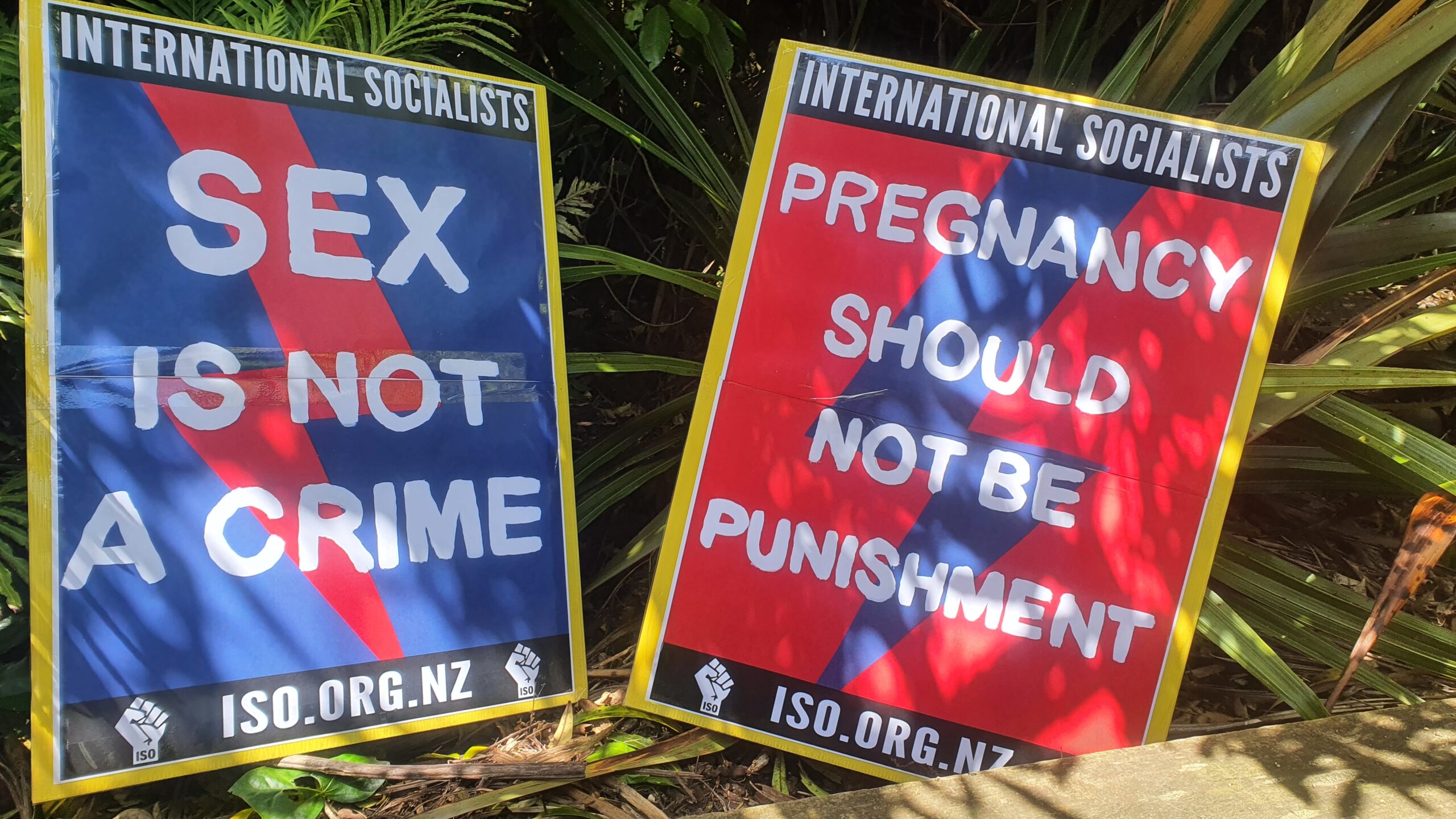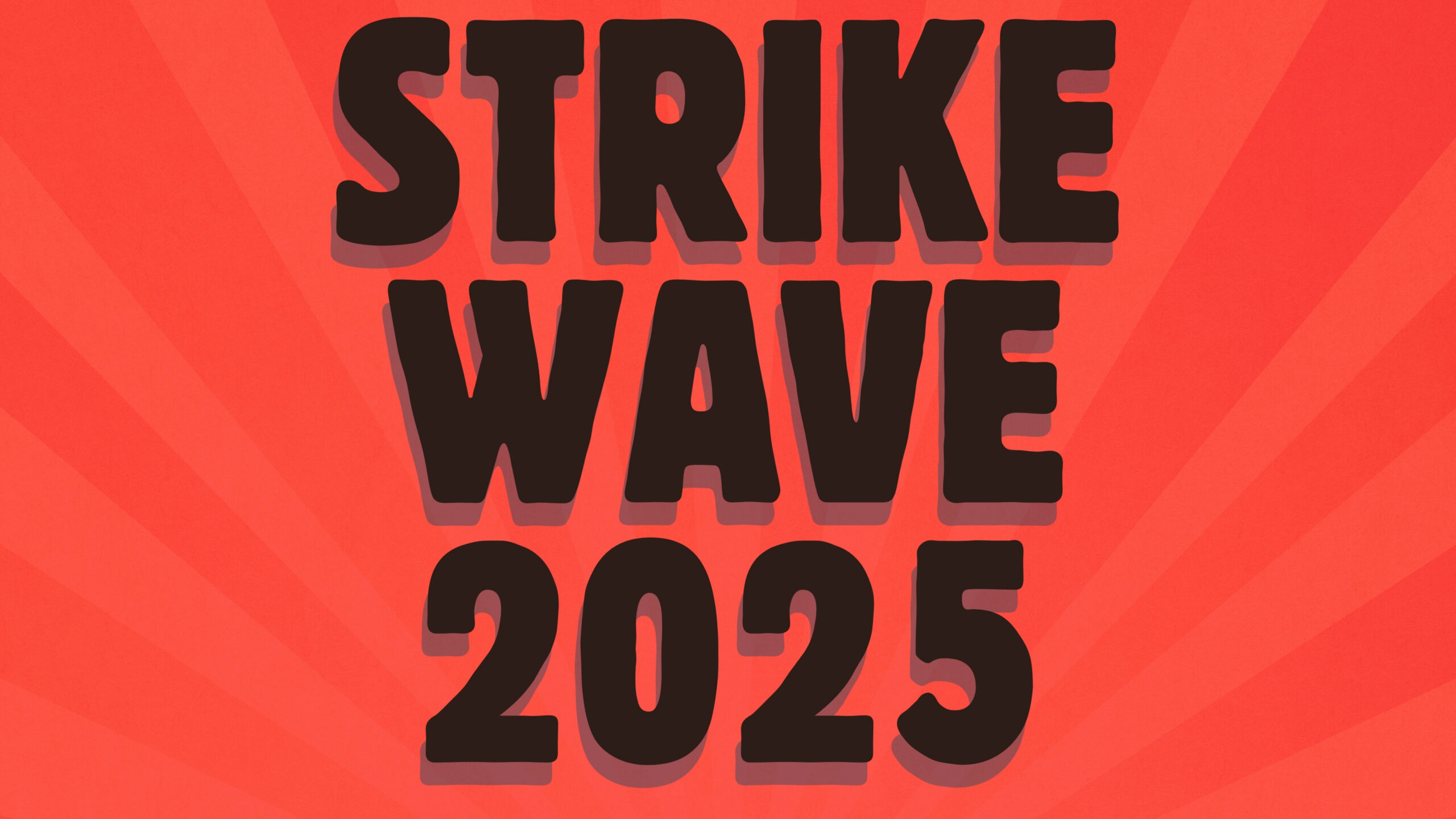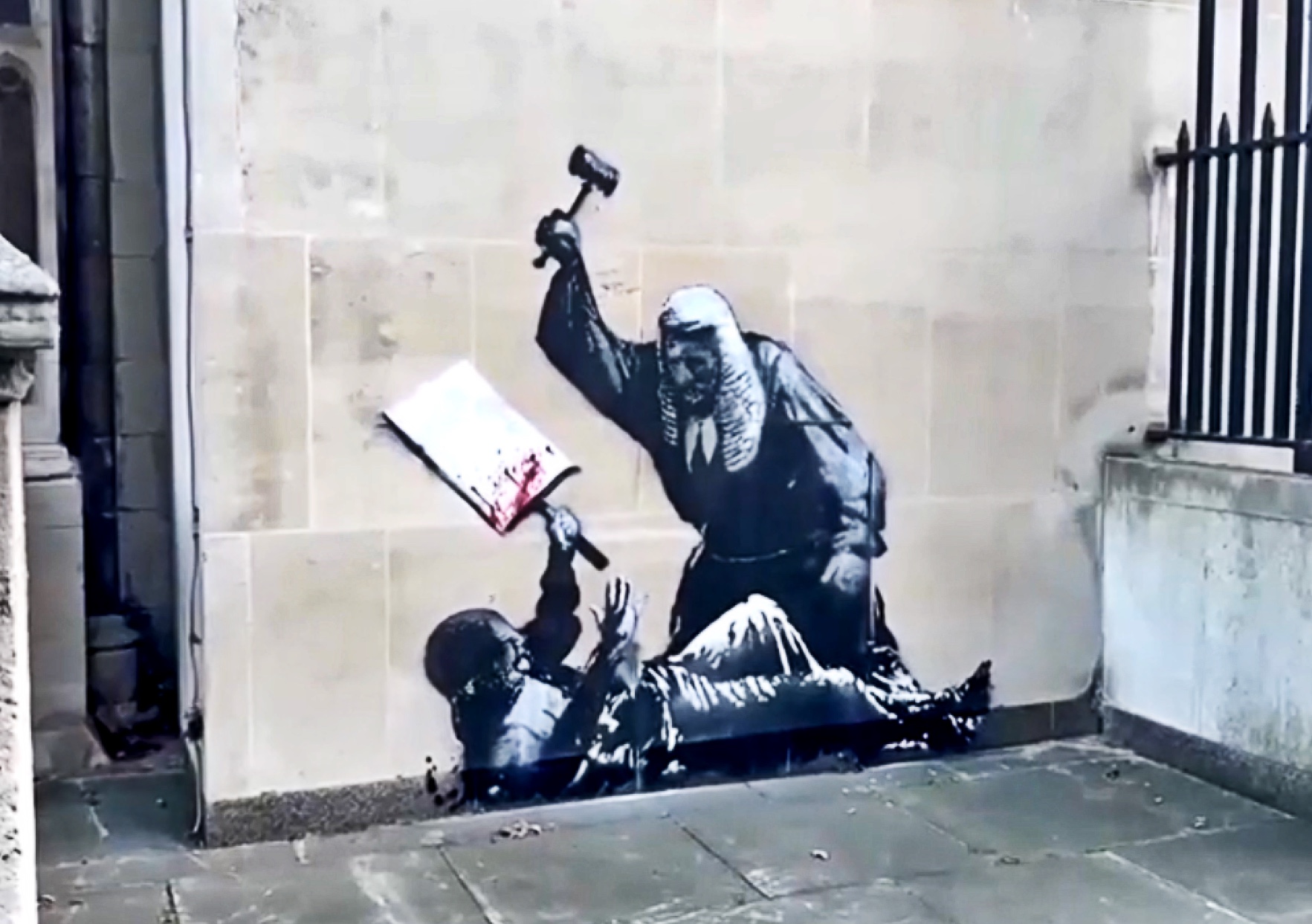Work in the performing arts – including dance, theatre and film – raises unique issues at the intersection of consent and workplace safety. Workers in these industries are fighting to raise awareness of these issues, promote safer practices, and strengthen protections against harassment and abuse.
Denise Roche is the director of Equity, the Aotearoa performers’ union. Equity members came together in 2020 in the wake of the #MeToo movement’s exposure of systemic abuse in Hollywood. As Denise says, “it became apparent that this wasn’t just an issue that happens in the states.” One outcome of these discussions was a new set of Intimacy Guidelines, now almost universally adopted, which “put consent at the heart of practice” in the creation of intimate material. This has historically been a high risk area for performers, Denise explains: “if it goes wrong, it goes really badly wrong and actually becomes sexual harassment and assault”.
At the same time, there is increasing awareness of the systemic issues and power dynamics that can leave workers in these industries vulnerable to abuse and unsafe working conditions. “There’s the competition that goes into actually just getting paid work”, Denise notes, “and [the] power of over who can give you a job is held by a very few people, so it puts you in a difficult situation right from the start”. Collective organising is needed to correct this power imbalance and enforce performers’ rights. Promisingly, there has been a recent revival in collective organising among performers.
When performers are put at risk
Guidelines around intimacy and consent are important because performers are often put in extremely vulnerable positions. Without clearly defined and well-enforced guidelines, performers are at risk of having their boundaries crossed by their co-stars, other people in the production team, and even by audience members. In the absence of collective enforcement of best practice, performers are left to advocate for themselves – something which is not easy to do given the power dynamics in their workplaces.
Hannah Tasker-Poland is a dancer and choreographer. She has worked in the performing arts for over 20 years in a wide range of roles. Hannah believes that things are changing: “Most people want to do the right thing,” she emphasizes, “and now people who have been lax about it are being forced to do better because of pressure from performers and performer unions”. These changes are badly needed. While Hannah sees things improving, she has had plenty of experiences throughout her career that exemplify the pressures that put performers at risk.
These factors vary across different industries. In film, as Hannah says, “everyone is up against the clock”, and the pressures of high production costs are felt. In the absence of proper protections, this can lead to performers not being given enough time to properly process or raise issues – Hannah has even had instances of being told “in situ and at the last minute” that nudity or simulated sex were being added to a scene.
Strict hierarchies on set are also a risk factor. Hannah has experienced struggling to advocate for herself and other performers on set in situations where even those who wanted to help them felt “under-thumb” of executives. In one instance, Hannah recalls being part of a group of extras in a big-budget sci fi film who felt they had to “plead” for people to help them remove elaborate costumes so that they could use the toilet – a situation that felt “demeaning”. As a result of these conditions, several of these performers contracted urinary tract infections.
Live theatre presents different challenges. If a costar or an audience member crosses a performer’s boundaries during a performance it can be very difficult to respond due to pressure to maintain the performance, especially if they feel it will impact future employment. Hannah recalls when a co-star sprang an unscripted open-mouth kiss on her on stage. In this instance she felt comfortable confronting him when they left the stage, but without proper support many may not feel so confident. There have been high-profile cases recently illustrating these issues. In 2020, Australian performer Craig McLachlan was accused of assaulting four of his co-stars on stage during a production of the Rocky Horror Picture Show. As reported by the Guardian, McLachlan was found “not guilty”, but the magistrate for the case stated that the women were “brave and honest witnesses” and noted that subsequent changes to legal standards for consent might have changed the outcome of this case.
McLachlan’s legal team used the sexualised content of the show as one defence against these allegations. This illustrates the way that sexism and distorted attitudes around consent heighten risks for performers. As someone who is known for being comfortable with nudity and sexual content in her work, Hannah has experienced people misinterpreting this as meaning that she does not need to be consulted about her boundaries. “People will say ‘oh, but you will be fine with this’”, Hannah recounts. “Like, why is someone else telling me what I would be fine with?” These dangerous attitudes can be internalised: there have even been instances where she has brushed off incidents that crossed her boundaries because she has internalised the reasoning that “this is what I do”. Sexist attitudes from higher-ups can also pose a barrier to issues being raised. As Hannah recounts, performers feel less comfortable raising issues with a director if the director has also been making sexist comments.
Dancers as a group are particularly vulnerable. The high premium put on discipline puts performers at risk of being taken advantage of, Hannah notes, especially as the dance world is “still shaking off historical power dynamics of ‘you’ve got to break your dancers to make them good’”. Scarcity also plays a role: “because there are a lot of dancers and barely any work, there’s often a feeling of being a bit desperate for a job, which then leads people to put up with more s***”. Dance also presents challenges when it comes to intimacy and consent, as there is a higher baseline of physical contact for dancers, and guidelines do not always take these unique challenges into account.
Knowing your rights
Industry-wide guidelines are one way to educate workers about their rights. Equity is pursuing a range of initiatives to educate workers, including visiting training institutes and running workshops with Worksafe.
Hannah is one of many who have taken up the free training offered by Equity in intimacy coordination. As she explains, the role of an intimacy coordinator is to help choreograph intimate content and to act as an on-site advocate for performers. “Intimate content” is a broad category, encompassing not just sexual content but also scenarios such as working with infants, and other sensitive material such as verbal or physical violence. “Sensitivity” also varies culturally; touching someone on the head, for example, may be seen as unremarkable in some contexts, while for Māori performers it is tapu. “Sometimes it sounds like a lot,” Hannah says, “but this is literally the bare minimum. It’s treating people with respect”.
In this work, Hanna teaches against the edict that “the show must go on” – especially when she is working with young performers – emphasizing that they have the right to walk off stage if they feel unsafe: “It’s actually just a show. Shows have to stop or pause all the time… There should be absolute understanding from the production team that yes, you made the right move”.
Collective Organising
The other facet of building a confident, empowered workforce is collective organising. Developments such as the recent SAG-AFTRA strike in the US have helped more performers in Aotearoa see themselves as workers who have rights – and potential power.
New Zealand governments have not been friendly to this collective organising. The 2010 “Hobbit Law” wiped out collective bargaining in film by classifying all screen workers as independent contractors. As Denise notes, the history actually goes back further – to the 1991 Employment Contracts Act, which led to increased casualisation across performing arts.
In 2022, the Labour government was pushed to repeal some aspects of the Hobbit Law. Screen workers can now negotiate collective agreements and set minimum standards across the industry, while still being classified as independent contractors. However, the right to strike has not been restored, leaving unions without leverage to bring employers and industry heads to the table.
In live theatre, there have been exciting developments. In 2022, Equity members negotiated a collective agreement with Court Theatre in Christchurch, the first such negotiation in decades. Equity have since negotiated another with Auckland Theatre Company, and are looking to do more. These collective agreements can help embed protections. Currently, Intimacy Guidelines are not legally binding – they are adopted voluntarily through the goodwill and cultural consensus of industry leaders. At present, collective agreements are the only mechanism through which they can be practically enforced.
The experience of collective organising also builds workers’ confidence to assert their rights. The negotiations at Court Theatre are a good illustration of this. This process began when Court Theatre, due to complications that arose during Covid, sacked a cast of actors. The actors reached out to Equity to help them challenge this. As performer Tiahli Martyn told Medium, “My first thought was, God, surely that’s going to get me blacklisted by the theatre and prevent future employment”. Denise, who worked with these actors, relates how the group went from being afraid to meet with union organisers to “recognising their own power”. The performers got their jobs reinstated, and from there used the opportunity to negotiate the historic collective agreement. Denise reports that this group of members have become “really good at ensuring that their rights are enforced”. Many from this group have now gone on to be union deputies (delegates) and two have been elected to the Equity board.
Unlike screen workers, performers in live theatre – if they choose to enter into an employment agreement – have a legally recognised right to strike during negotiations or for health and safety reasons.This gives workers important leverage to enforce their rights.
Challenges ahead
While performers fight to make improvements, the election of a government hostile to workers’ rights and indifferent to the arts has people in the industry worried. They fear that the government could roll back recent gains in industry protections, such as Enterprise Bargaining in screen arts, as they have done with Fair Pay agreements.
Denise describes the state of arts funding as “dire and woeful”. Governments know that artists are exploitable, due to their love of their craft and entrenched precarity in their industries. They are willing to use this to squeeze as much out of the arts industry as they can while putting as little as possible back in. As Denise says, “that whole move to austerity whenever there’s a glitch in the global economics makes it harder and harder for artists to make a living because the funding dries up”.
Scarcity fuels the competition and power imbalances that put performers at risk. This is exacerbated by a lack of safety net for performers between jobs, as the punitive benefit system does not adequately support creative workers. Income statistics for artists paint a grim picture. According to CreativeNZ, in 2023 artists received a median income of only $19,500 a year from their creative work, and a total median of $37,000 a year when supplemented with other income. All of this puts performers in a compromised position when they are asked to balance their personal boundaries with the need to find work. Hannah sees the repercussions of this first hand: “people are saying yes to things they wouldn’t usually say yes to.”
The fight for workplace safety in the arts, then, is a broad political fight. It is part of the wider fight of workers, and especially women workers, to defend our bodily autonomy within a system that demands we perform for a wage. It is also the fight for a society that looks beyond profit to see the true value of art as a source of joy and creative expression, and which values and respects the artists who do this creative labour.
Image Credit: Pavel Danilyuk









